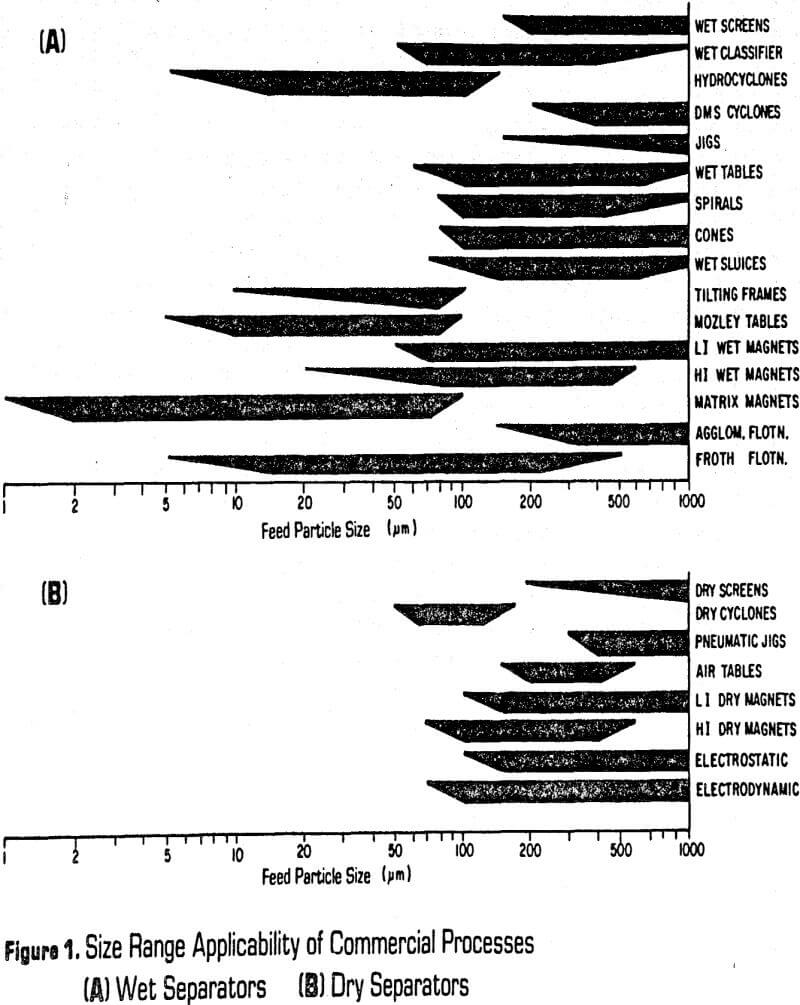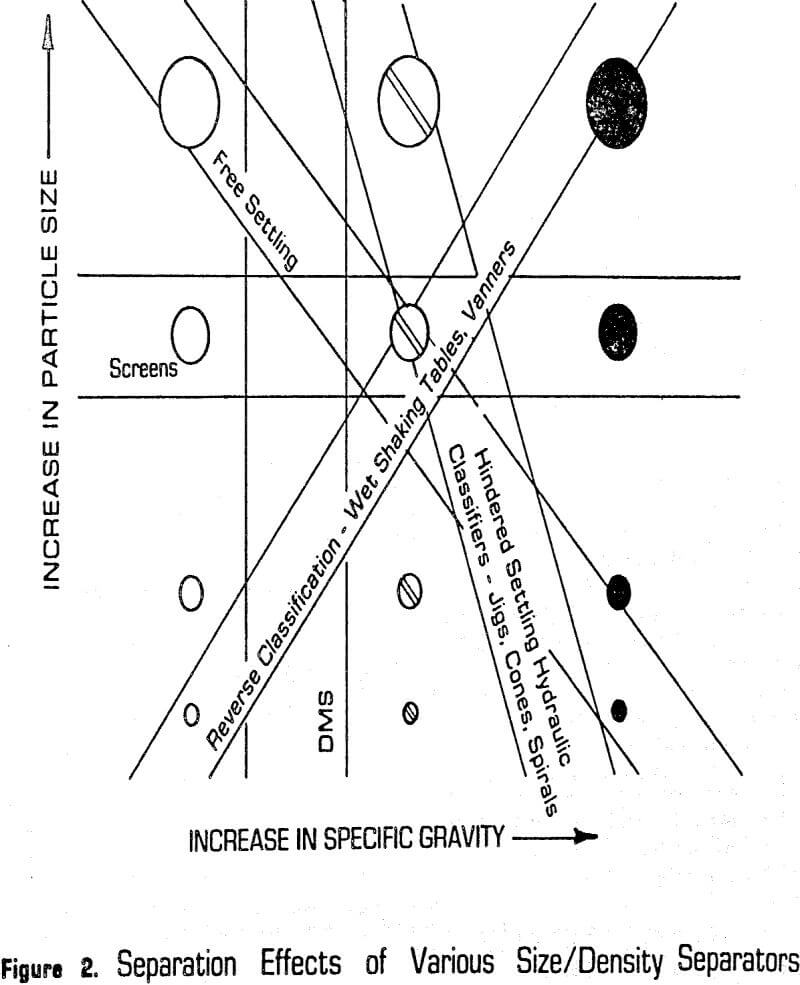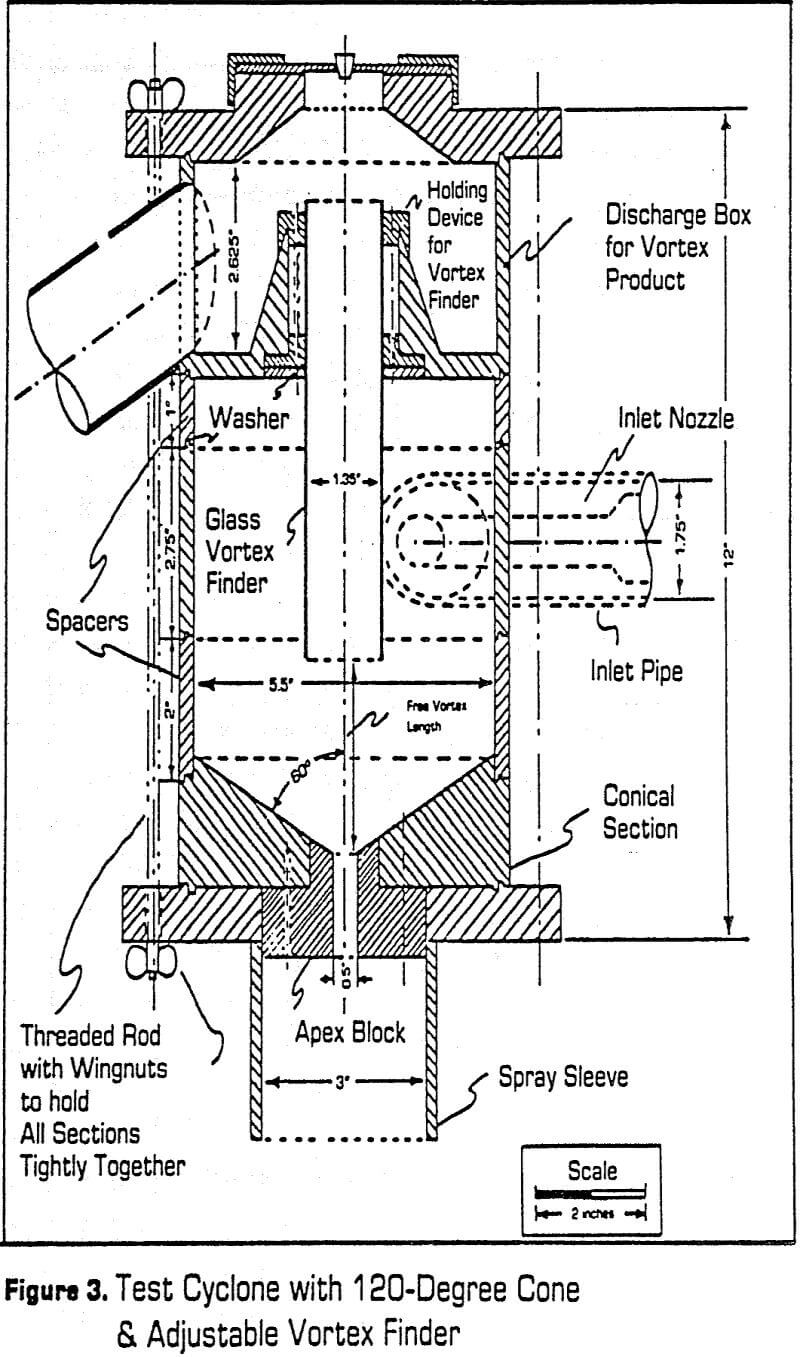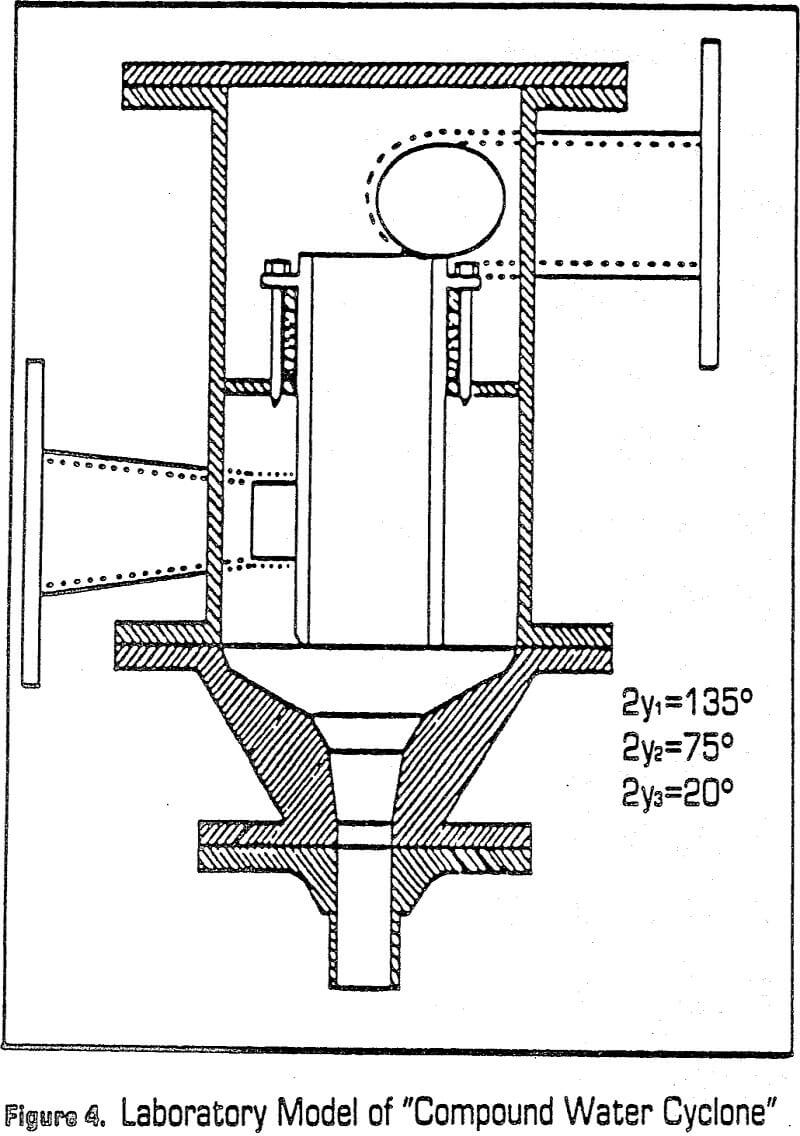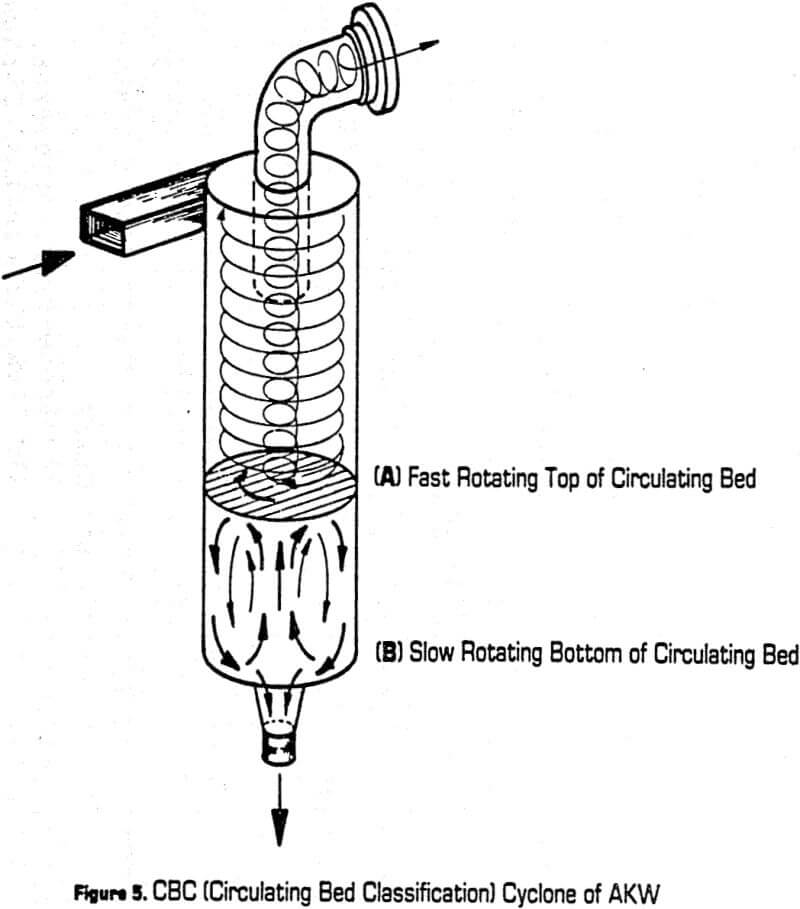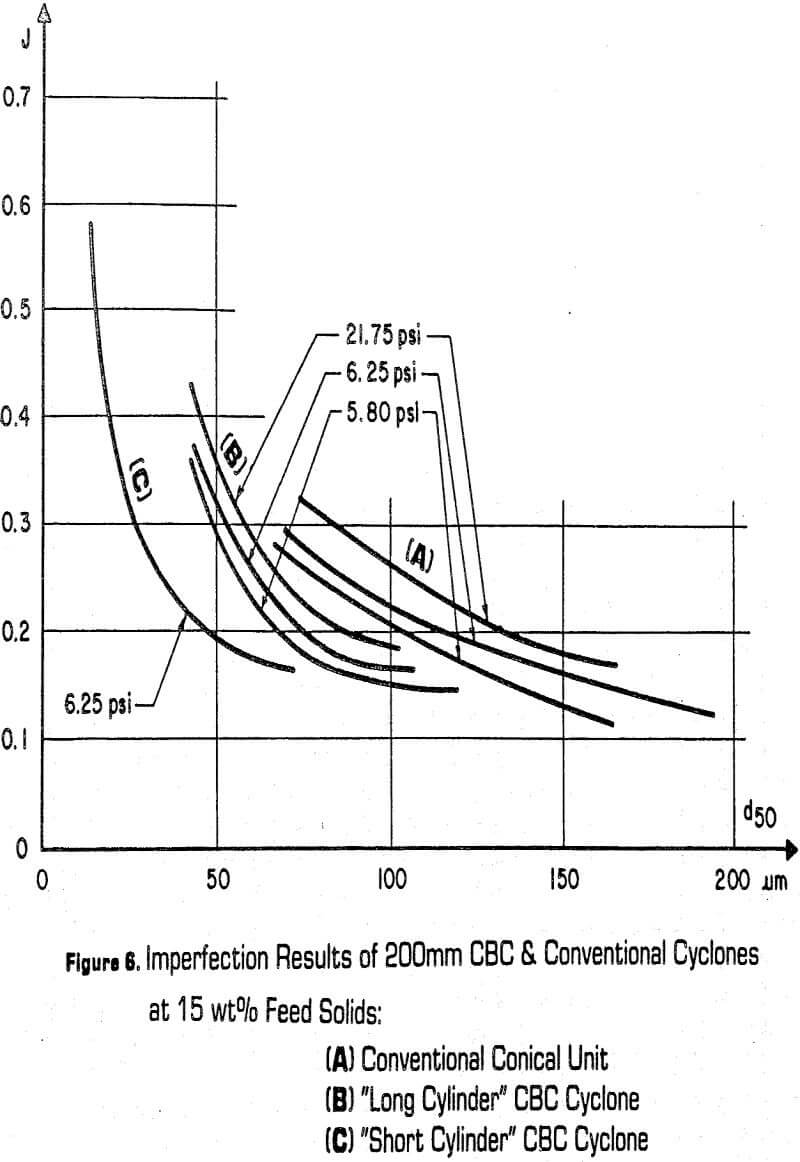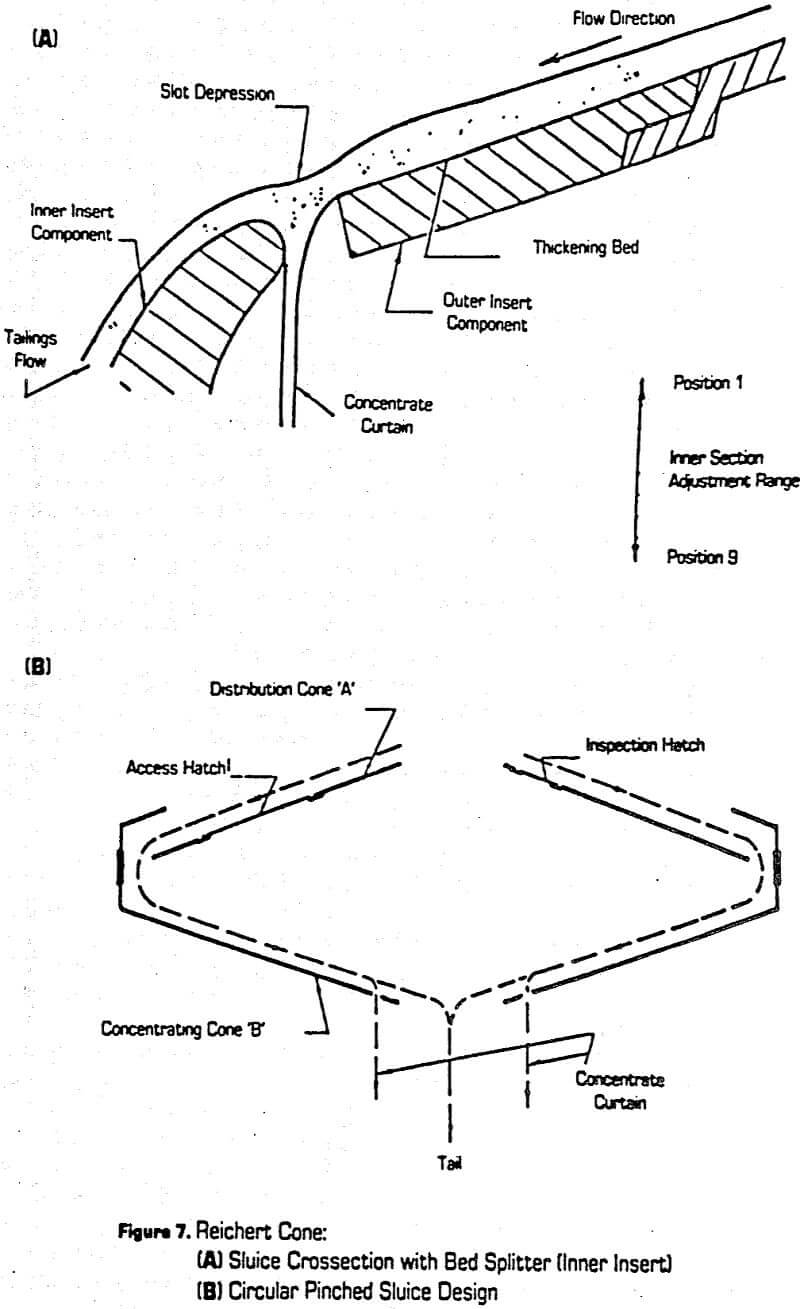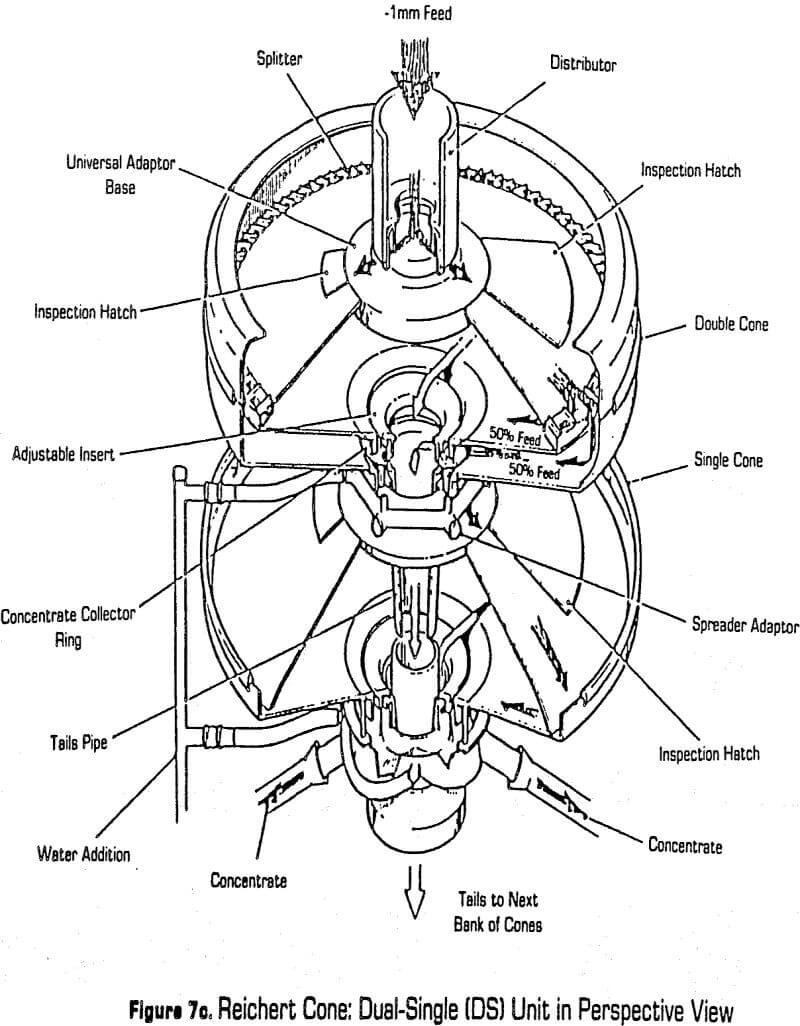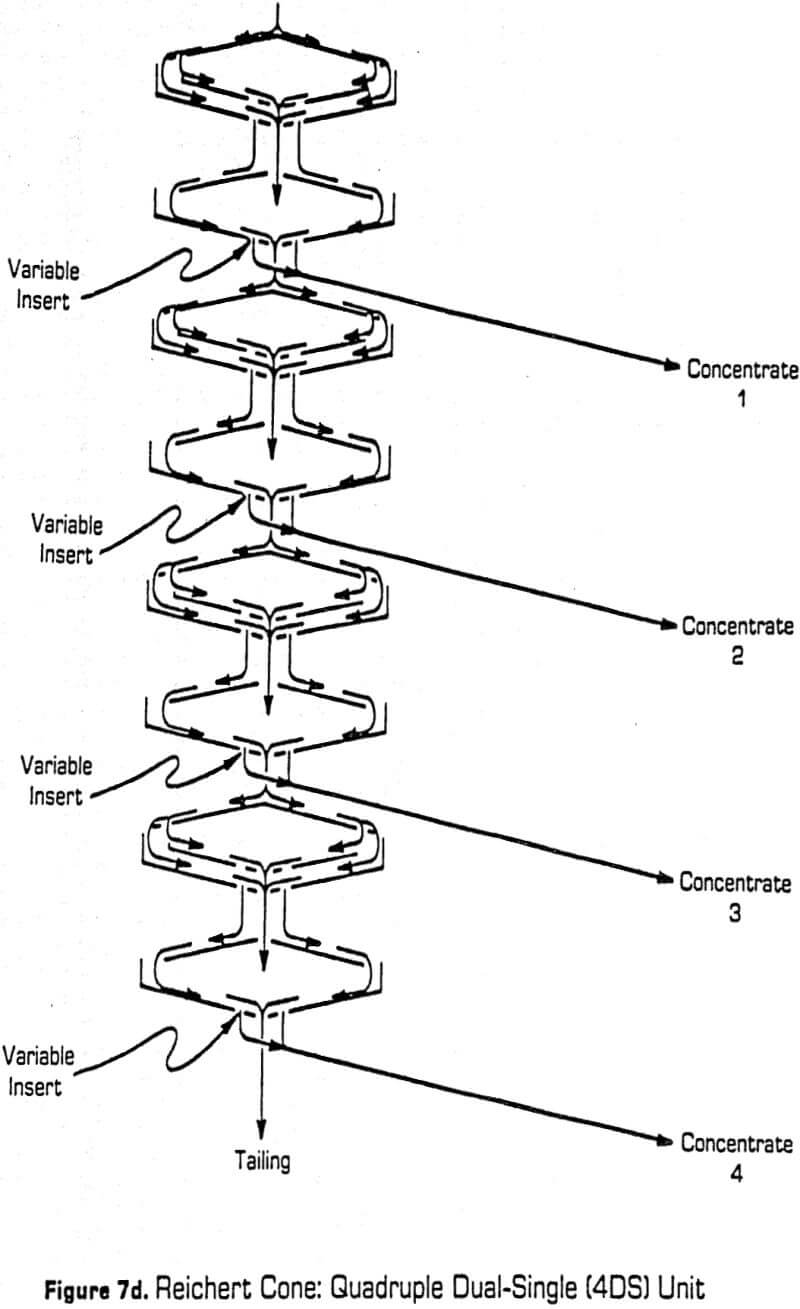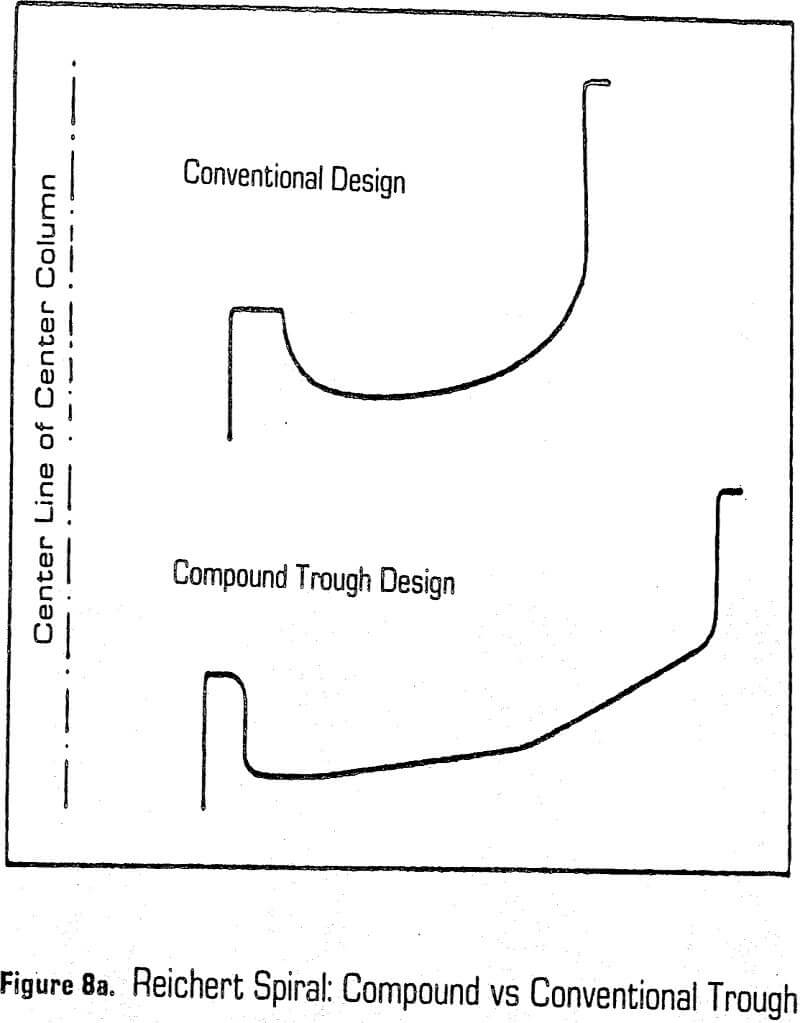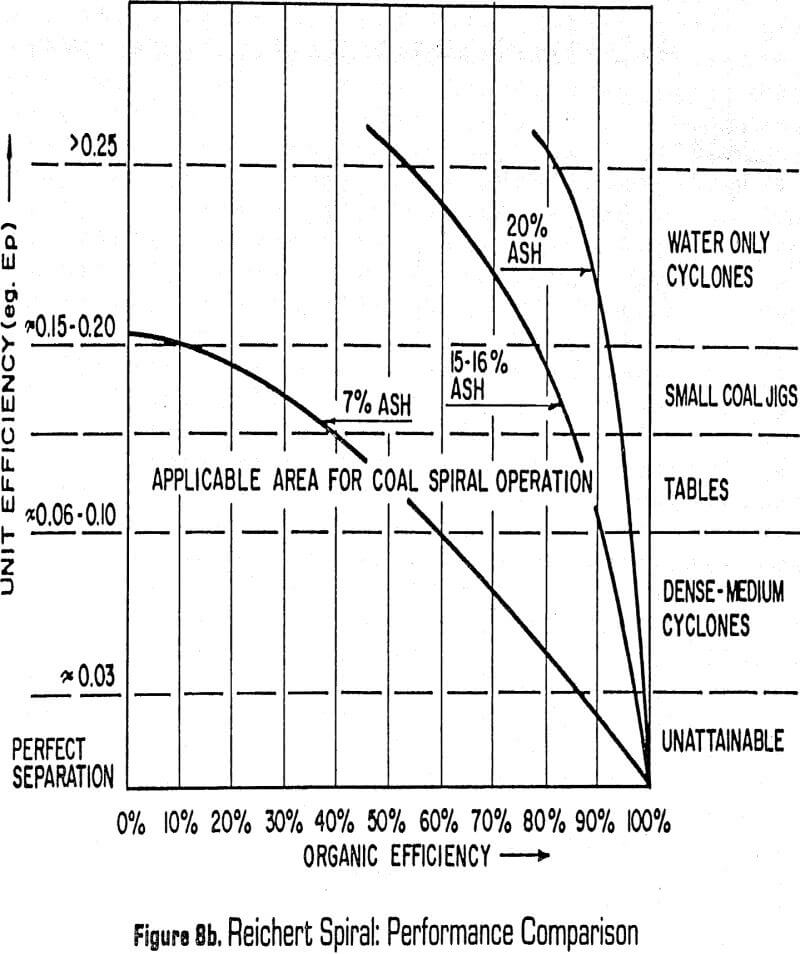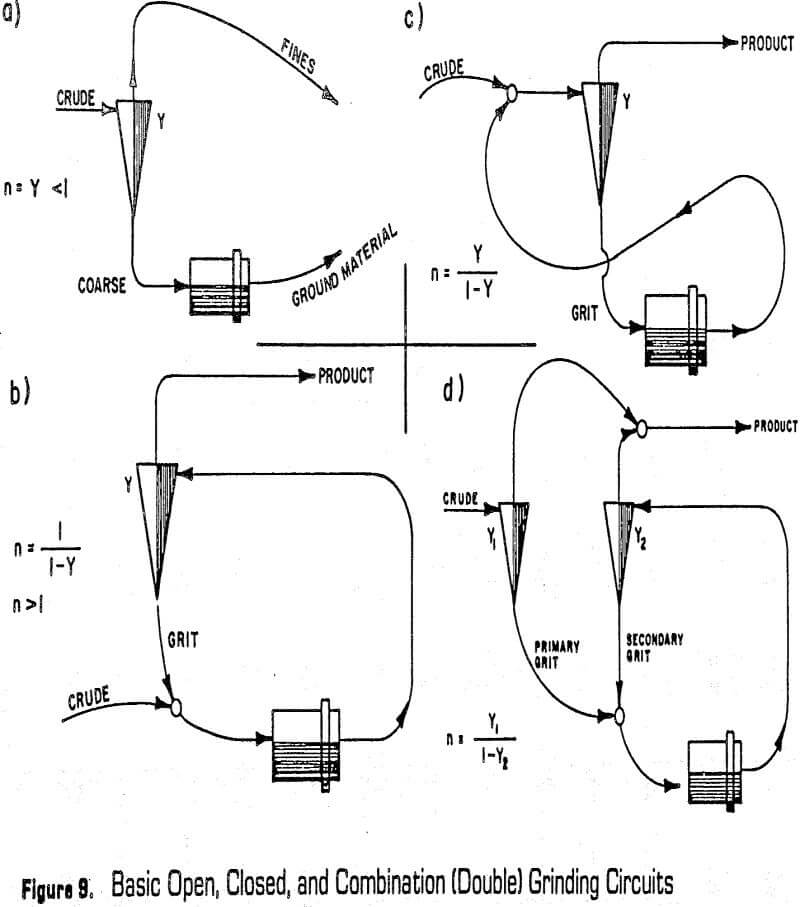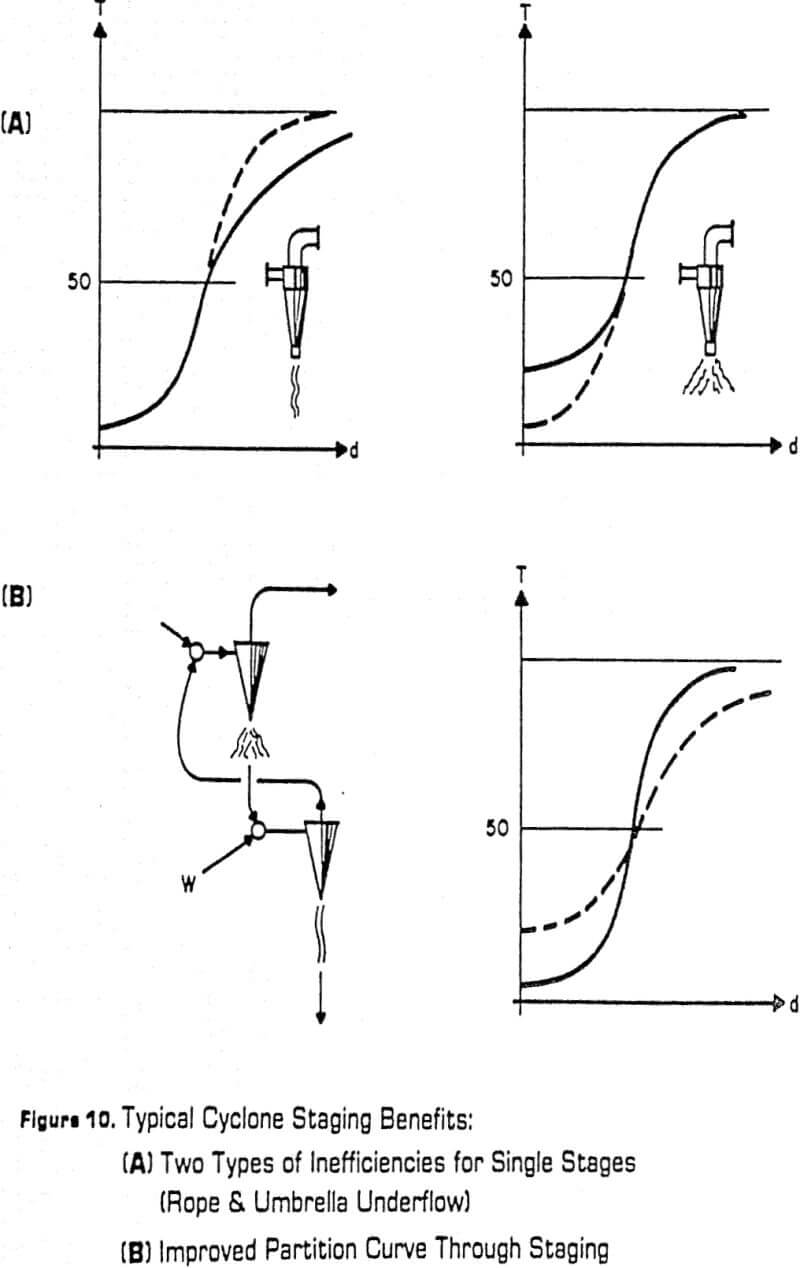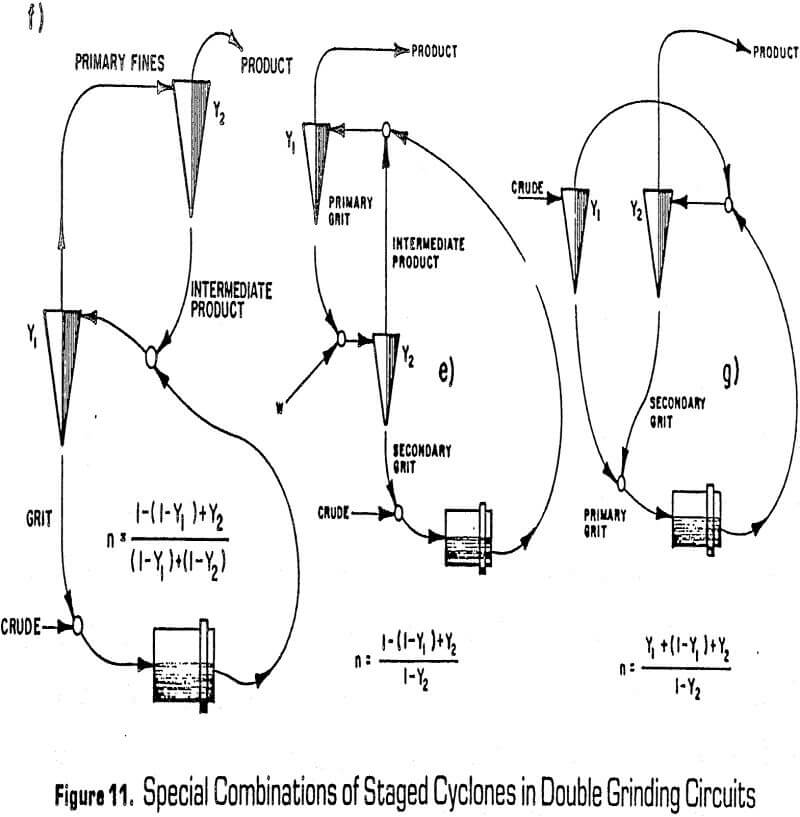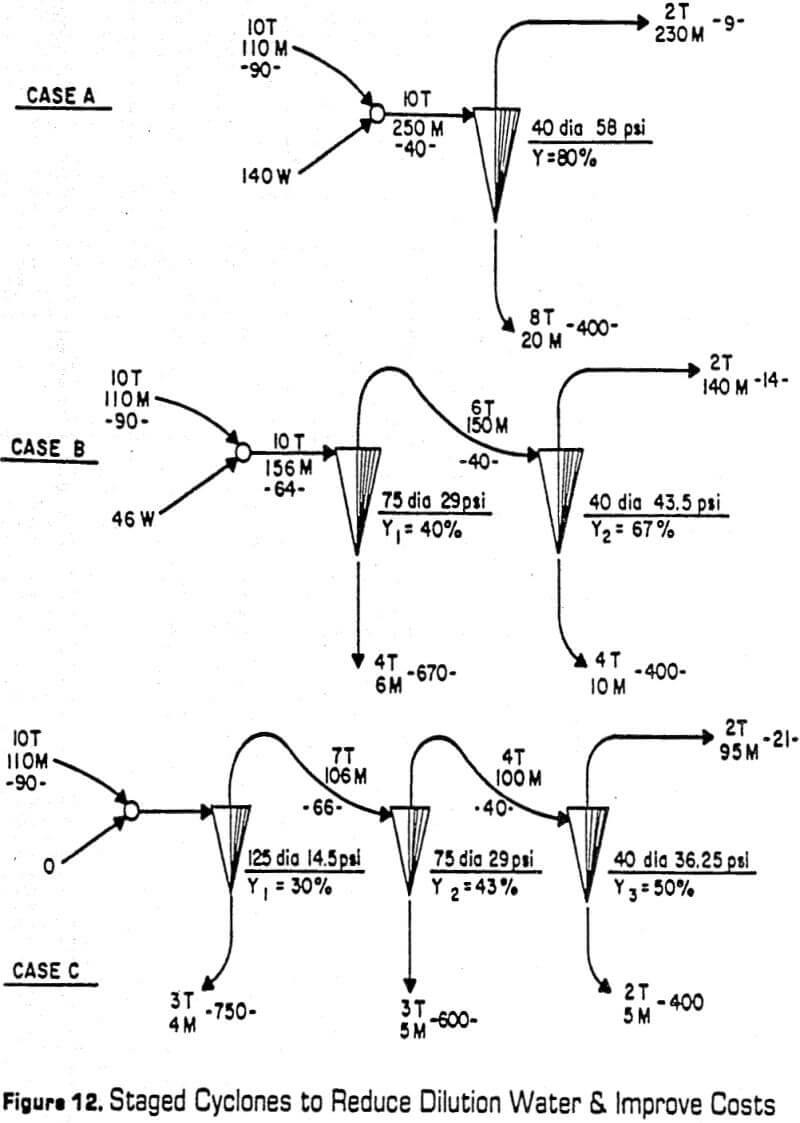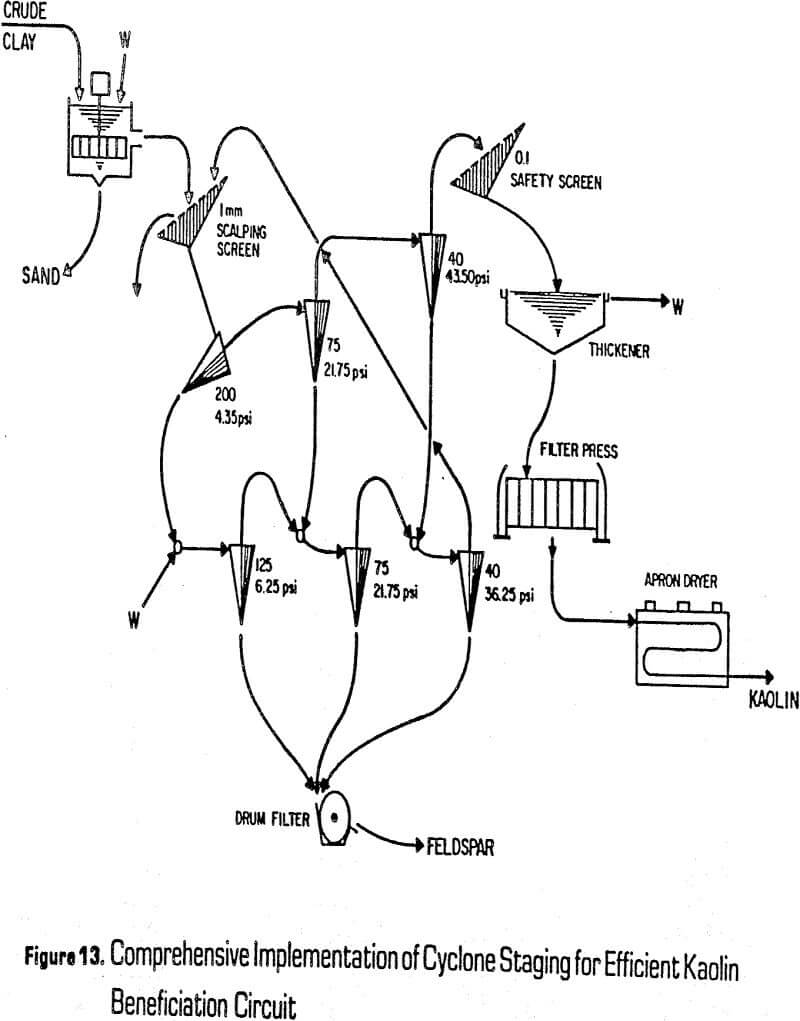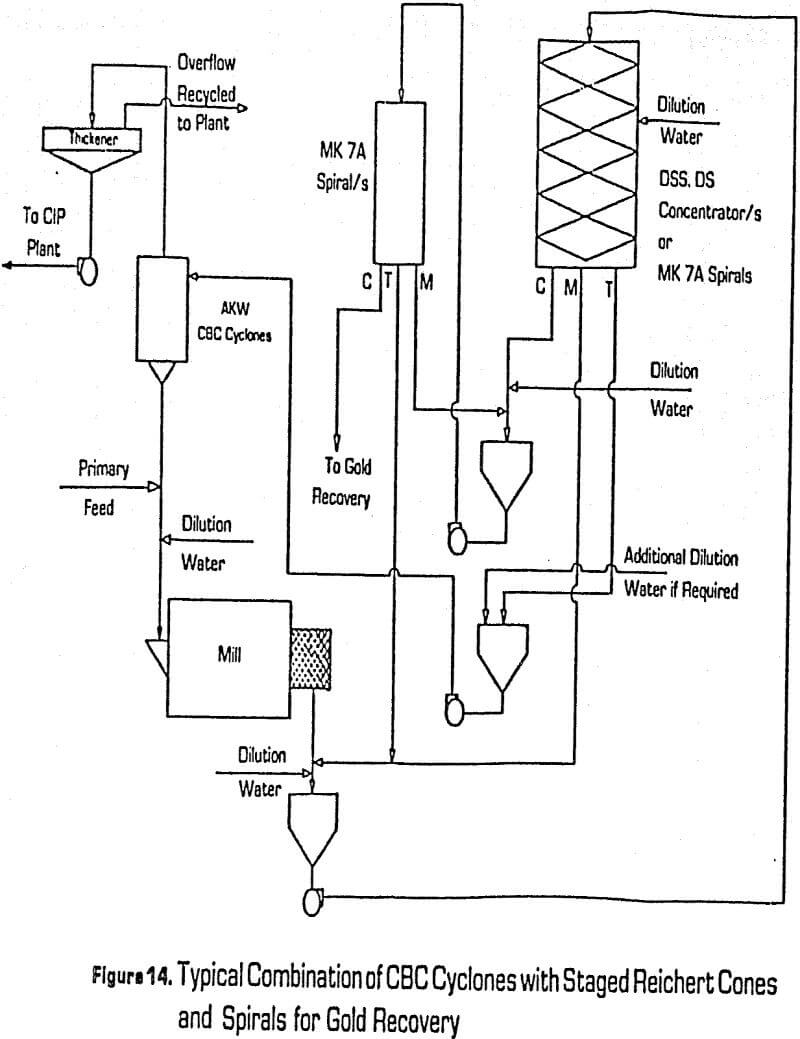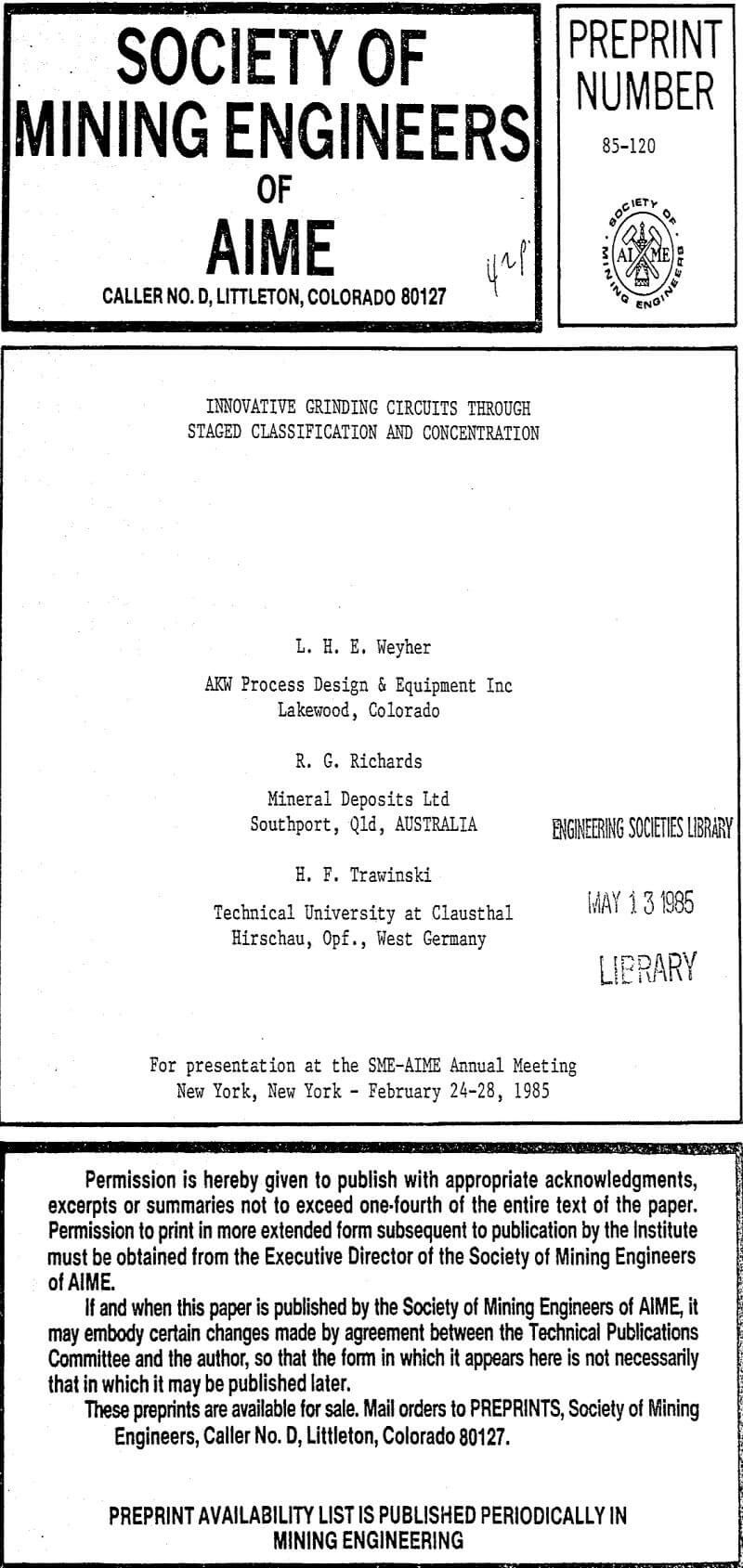Table of Contents
Minerals beneficiation commonly requires initial crushing and grinding so that the mineral phase we seek to concentrate is adequately liberated to obtain a product of specified grade at optimum recovery. To some degree this also is true for coal preparation. In the comminution process we liberate not only the product but also the tailings phase. The true objective is, therefore, to eliminate from the comminution circuit whatever particulate matter has reached specified liberation, regardless of whether the particle is product or tailings material. Overgrinding either of the two phases ties up mill capacity and usually also burdens the downstream processing steps by increasing costs or decreasing recovery, or both.
The Unit Operations Challenge
Overgrinding costs not only mill capacity but, frequently, also burdens subsequent processing steps with inefficiencies or other penalties. Thus, we seek to (1) liberate particles as coarse as possible and (2) remove them from the circuit as early as possible, regardless of whether these particles are product or tails. The first objective relates strictly to comminution technology and involves such considerations as impact versus other grinding methods, use of reagents to enhance grinding along mineralogical boundaries, etc. The second objective is more in tune with the scope of our topic. Let’s look at particle properties that we can utilize for effecting separation from the grinding circuit.
In this wide spectrum of unit operations for beneficiating raw materials, we usually encounter process responses not to just one but to combined and even competing particle properties. For example, electrostatic separation is very much affected by humidity for all size ranges and by aerodynamic phenomena for small sizes. Flotation is affected by hydrodynamic and other phenomena. In fact, most standard processes are not one but multi-dimensional, i.e., they are controlled by more than just one material variable.
Classification by settling, a classical unit operation for processing minerals, is multi-dimensional with respect to the combined effect of particle size and density in effecting the separation. Particle shape is a distinct third dimension that may influence the classification process performance.
Specific Size and Density Separation Processes
Size and density separation, and combinations thereof, are the principle unit operations we have considered for the removal of liberated particles from the grinding circuit. Other unit operations will, in any specific design study, become the subject of analogous examinations.
The remainder of this section reviews three specific classification and gravity sorting devices that are receiving growing recognition: the AKW CBC, or Circulating Bed Classification cyclone, and the Reichert cones and spirals.
This flat-bottom hydrocyclone resulted from extensive cyclone research and evaluation of the limiting design and operating parameters encountered with traditional classification hydrocyclones that feature relatively narrow cone angles. For classifying relatively coarse solids, especially at low tonnages, the typical narrow-to-medium cone-angle hydrocyclone has always presented some problems. Cyclone scaling laws relate the separation (i.e., d-50 particle size) positively to cyclone diameter.
The design of the CBC cyclone for mineral processing and its beneficial use for grinding circuits, especially in conjunction with subsequent gravity processing, is obviously related but is newer and is based on years of hydrocyclone development and experience not stressed in earlier applications to coal preparation. .
This circulation causes self-regulation of the underflow density as long as sufficient momentum is supplied to the system by the tangential feed-flow. Throttling the underflow nozzle will affect bed thickness, and hence, vortexfinder clearance and cut-size, but will affect underflow density very little. Obviously, these are welcome features for controlling the feed or recirculating load to the grinding mill.
Traditional gravity sorting or separation equipment comprises mainly: jigs, tables and, of course, sluices used for dense alluvial or placer-type minerals beneficiation. With the introduction and increasing sophistication of flotation processing for most ores, gravity processing became sort of a step child. Yet it definitely has survived in processing those ores less amenable to flotation; e.g., tin, chromite, and heavy mineral sands {or where the relatively low costs of gravity separation feature particular advantages; e.g., in coal preparation). Today, the cost advantage of this method is accentuated by environmental and energy costs of certain non-gravity separation alternatives.
The increasing penalty for sulfur in coal served as an additional stimulus for development of fine coal gravity separation developments in the face of the inherent difficulties, if not infeasibility of sulfur reduction by flotation. The mechanics of density stratification in jigs and tables became better understood, opening doors to new developments. Spirals, pinched sluices, and the Reichert cone (an ingenious implementation of the pinched sluice concept) became the new tools available for gravity sorting. The use of wide-angle hydrocyclones was a parallel development emphasized in the coal industry and previously covered.
The Reichert cone concentrator is a high capacity, low cost gravity concentrator developed by Mineral Deposits Ltd. of Gold Coast, Queensland, Australia. The separation mechanism involves a combination of hindered settling and intergranular trickling resulting in a stratified flowing bed in which the heavy and fine particles are concentrated at the bottom of the pulp stream and are removed through an annular slot.
Spirals, originally designed for heavy mineral beach sands and later adopted for other minerals, have been known for a number of years.
Principal Grinding Circuit Designs
Basic options for designing a grinding circuit initially are: (1 ) an open grinding circuit, (2) a closed grinding circuit, or (3) a double or combination circuit.
The Open Circuit. This option features hydrocyclones ahead of the mill. The underflow becomes mill feed and is ground. The hydrocyclone overflow and mill products then are subjected to further processing. No interim product is recirculated. Subsequent and separate grinding may exist, in which case the overall liberation process should no longer be considered an open circuit model, although subsystems might be open ciruits.
The Closed Circuit. This option typically features hydrocyclone separation of the mill product such that the underflow is sent back to the mill for regrinding while the overflow becomes feed for subsequent sorting operations. In this system the mill does not discharge directly to subsequent processing steps. It is closed off from subsequent processes by the classification process.
Combination Circuits. This option can either feature a single cyclone combining the two principal classification functions stated above into one unit, or two cyclones to handle separately these two functions. In the former case, the cyclone receives mill feed as well as mill product for separation into an overflow product for further processing and an underflow product subject to grinding. The latter case is more logical and operates one cyclone ahead of the mill, like an open circuit classification unit, and a second cyclone for the mill product, just as in a closed circuit. This improves the overall efficiency.
When considering any one of these grinding circuit options, one must be aware of some typical problems that may be encountered and their possible solutions. Obviously, once we accept more than one cyclone in these basic circuit definitions, we multiply the options for overall circuit layouts.
Grinding mills generally are operated at high solids concentrations. Usually, the solids concentration is too high for effective classification. The option of diluting the cyclone feed with make-up water for improved operation infringes on the desire to maintain high systems capacity use. The option to recirculate hydrocyclone overflow for dilution is only possible in circuits of high recirculating loads and generally is not very effective.
In order to remedy this dilemma, we may look for a classifier that does-a better job than standard cyclones in classifying relatively coarse sizes without sacrificing capacity. The CBC cyclone is one answer.
Advances in screen designs have also been significant. Screens can be applied to finer sizes than previously was possible and have better wear characteristics. However, screening still is limited to the coarser end of the size range under consideration and screen wear remains a factor.
Grinding in Series. In this arrangement, the cyclone underflow and overflow are sent to different mills. A 2 to 1 split between overflow and underflow solids is practical in many cases. To maximize the enrichment of dense particles in the cyclone underflow, a CBC cyclone ahead of both grinding sections is recommended. One mill then is fed CBC underflow for each two mills that receive CBC overflow. The mill products are classified and recirculated using conventional hydrocyclones for classification. The authors recommend consideration of this option.
Application Examples
Any grinding circuit that combines more than one sizing and/or classification step in series really operates with staged classification. In its simplest form, this means superposition of a plain open circuit and a plain closed circuit; i.e., the previously stated combination circuit using a single cyclone staged to itself across the mill or two cyclones ahead and after the mill respectively. If the grinding mill raw feed is subjected to prior classification as in a basic open circuit, the case labeled “g” in Figure, 11 may deserve consideration. It too facilitates control of coarse material recirculation from the secondary cyclone.
These general cases and possible variations aim at striking a cost-effective balance between classification efficiency and circuit stability. Each case requires individual analysis and design. Some situations suggest classification, others suggest screens alone or in staged combinations. The mill itself is known to perform some classification of its load and, of course, responds to changing feed compositions. This too has to be quantified and considered in the circuit design.
Staged cyclone/hydroclassifier systems have been used for years in iron-ore processing, with different types of hydroseparators used in the overflow stream of the hydrocyclone.
Reference in the previous section to classification and sorting of iron ore in staged classification shows that there is no sharp delineation between staged multiple classification and classification/sorting circuits. We simply take advantage of the classification processes as possible.
A particularly interesting circuit that lends itself to flexible scaling for the wide range of tonnage requirements typically encountered in gold recovery circuits.
